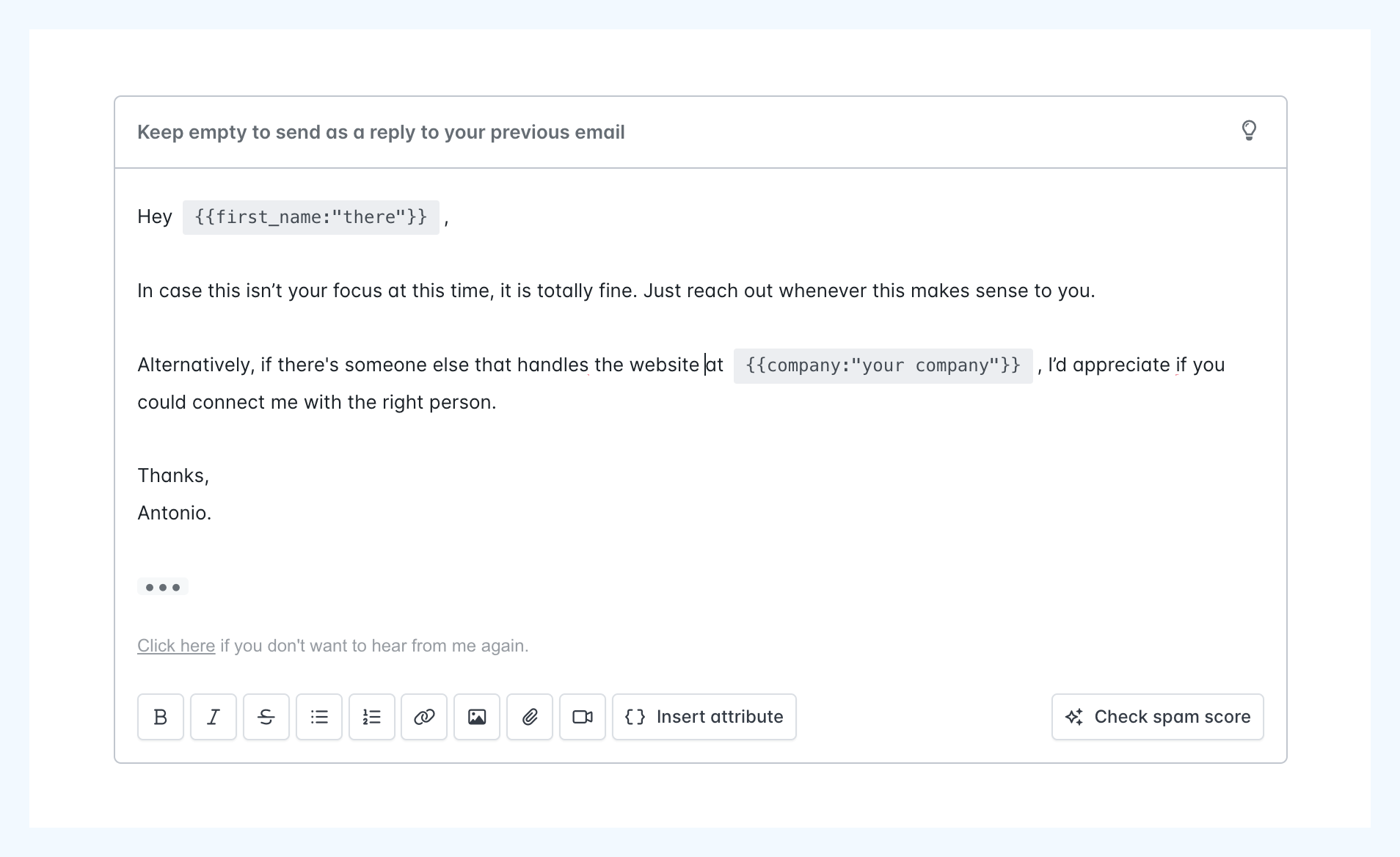A great cold email needs to meet the following requirements:
- It needs to present relevant arguments to the recipient.
- It needs to be persuasive:
- It must cultivate a relationship between you and the recipient.
- It needs to remove the recipient's uncertainty.
- It must motivate the recipient to take action.
But how do you choose the right arguments, and how can you be persuasive when presenting them?
If you can answer these questions, you’ll write a great cold email.
How do you choose the right arguments?
Step 1: Anticipate your recipient’s beliefs and intention
Knowing how your recipient may react to your cold emails may seem like a tall order. But it’s not impossible.
Especially if you know the industry you’re targeting, you may have a good feeling about prevailing attitudes and opinions.
It’s even easier if you have a framework to follow that helps you ask the right questions.
There’s a brilliant framework for analyzing and influencing why people do what they do called the reasoned action approach. It was created by two social psychologists, Icek Ajzen and Martin Fishbein, who described the framework in Predicting and Changing Behavior: The Reasoned Action Approach.
The framework is based on the premise that people’s behavior can be predicted by analyzing their intentions, which, in turn, can be predicted by analyzing their:
- Attitudes (your personal beliefs about the behavior in question)
- Perceived norms (how people you value would expect you to act)
- Perceived behavioral control (if you think you’re able to perform the given behavior)
Trying to predict your recipient’s beliefs in all three categories makes it easier to predict how they might react to your email.
But that’s a lot of theory. Let’s use a specific example.
Imagine you’re a marketing manager at an SMB using HubSpot, and you receive a cold email from someone at Pipedrive saying that Pipedrive is a better solution for your needs.
First, we need to establish your desired behavior: the email sender wants you to reply positively, which will start a conversation about moving to Pipedrive.
Here’s how we could apply the reasoned action approach to predict if you’ll behave in the desired manner:
Attitude analysis:
- As the marketing manager, you’re heavily involved in using HubSpot. You’re aware of its strengths and weaknesses. You are more likely to be interested in features and ease of use than in pricing.
- You evaluate Pipedrive based on the email, considering potential benefits over HubSpot. If you think Pipedrive can deliver the same features with increased ease of use, your attitude will be positive. Better pricing would not be the deciding factor, but it’s a nice bonus.
Norms analysis:
- Even in a small business, you’re likely collaborating with a few others in HubSpot. Being aligned on the software choice makes work easier. That’s why you are bound to consider the opinions of your coworkers.
- If your team likes HubSpot, you might feel inclined to comply with these preferences. If the majority wants to stick to HubSpot, you might feel social pressure not to consider switching to Pipedrive. Knowing more about team collaboration in Pipedrive could help you champion the change.
Behavioral control analysis:
- Can you even migrate from HubSpot to Pipedrive? You assess how difficult and time-consuming it would be.
- If you feel the transition would be manageable, this increases your feeling of control over making the switch. If you knew you could easily migrate in an automated way, it would increase your feeling of control. And a high level of perceived control would make you more inclined to consider Pipedrive.
Putting together the results of our analysis, we can determine your intention and, in turn, whether or not you’ll reply to the email.
Anticipating this can help find the right arguments that you’ll use in your email.
Step 2: Close the gap between expected vs desired intention
As you’re sending a cold email, it’s your goal to affect your recipient’s beliefs in all three categories and change their intention toward replying.

In other words, based on what you know about what your recipient might think, you need to define what you need to say to affect their position.
You need to answer the following question: What does your recipient need to believe to want to reply positively?
Let’s get back to the example from before. What can you say to encourage a marketing manager at an SMB to move from HubSpot to Pipedrive?
- Attitude: Pipedrive is easier to integrate with your marketing & sales stack. The UI is simpler because it’s not as feature-heavy.
- Social norms: Other teams love it, and 87% stick to Pipedrive three years after making the move.
- Behavioral control: You can seamlessly transfer your data with a few clicks. And our team is there to help 24/7.
Remember that you don’t have to use all these arguments in a single email. Your follow-up emails can (and should!) add arguments in your favor.
How to write a persuasive cold email?
Even if you make all the right arguments, you must also employ persuasion. People heavily rely on trigger-based behaviors, and that’s where persuasion comes in handy.
Robert Cialdini is a foremost expert on persuasion, and in Influence: The Psychology of Persuasion, he describes the seven universal principles that characterize any social interaction that involves persuasion. Cialdini also puts his principles in three categories based on the type of change you want to achieve:
Relationship cultivation
Building a personal connection is crucial for most cold email use cases. Email is inherently a personal channel because it’s based on one-to-one communication.
That’s why you must focus on establishing a relationship with the recipient. According to Cialdini, the persuasion principles best positioned to help you here are:
Reciprocity
The rule of reciprocity states that society trains us to replay all kinds of favors, even unsolicited.
You can use this mechanism to your advantage by giving your recipient something before asking for something in return.
In cold emails, the value point you provide can be:
- A piece of potentially valuable information.

- Something with actual monetary value, like a gift card (which isn’t uncommon if your use case for cold emails is high-ticket sales).
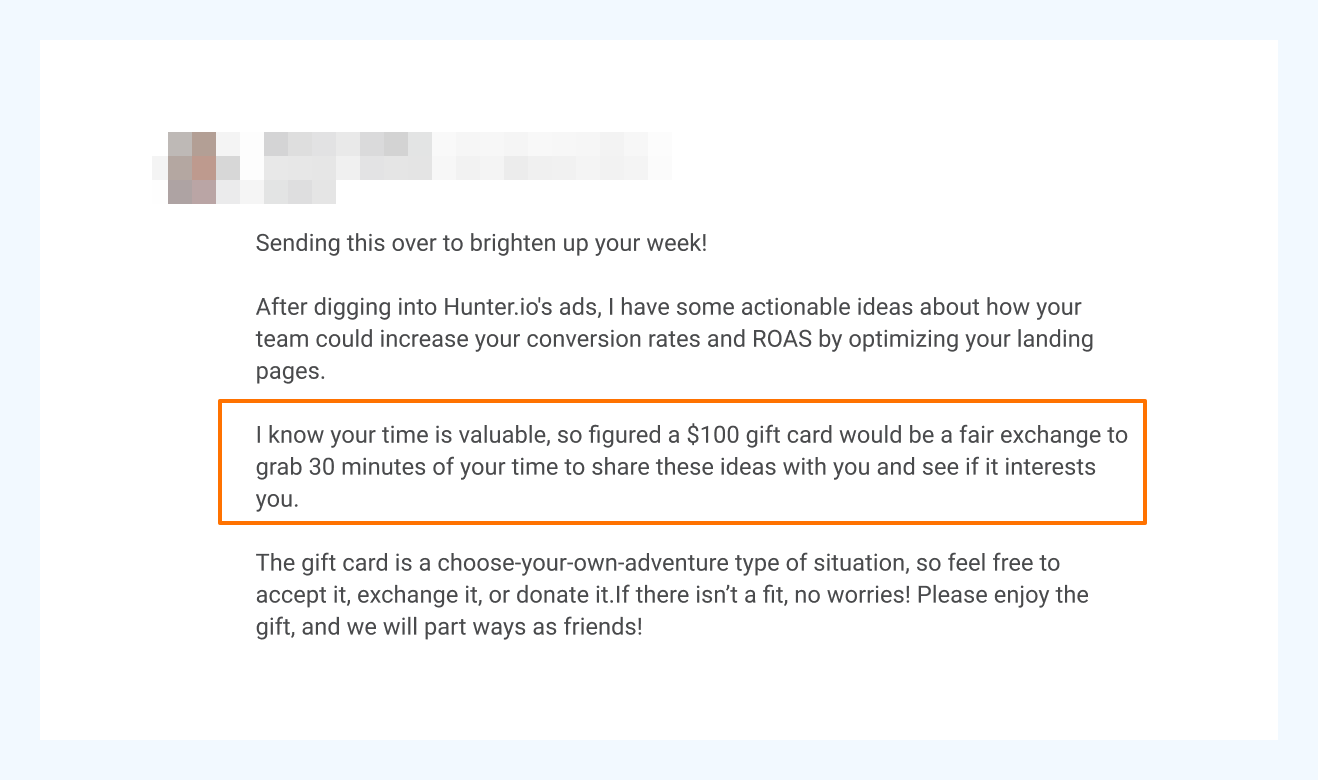
- You can also evoke feelings of reciprocity by making a concession from your initial request in a consecutive follow-up email.
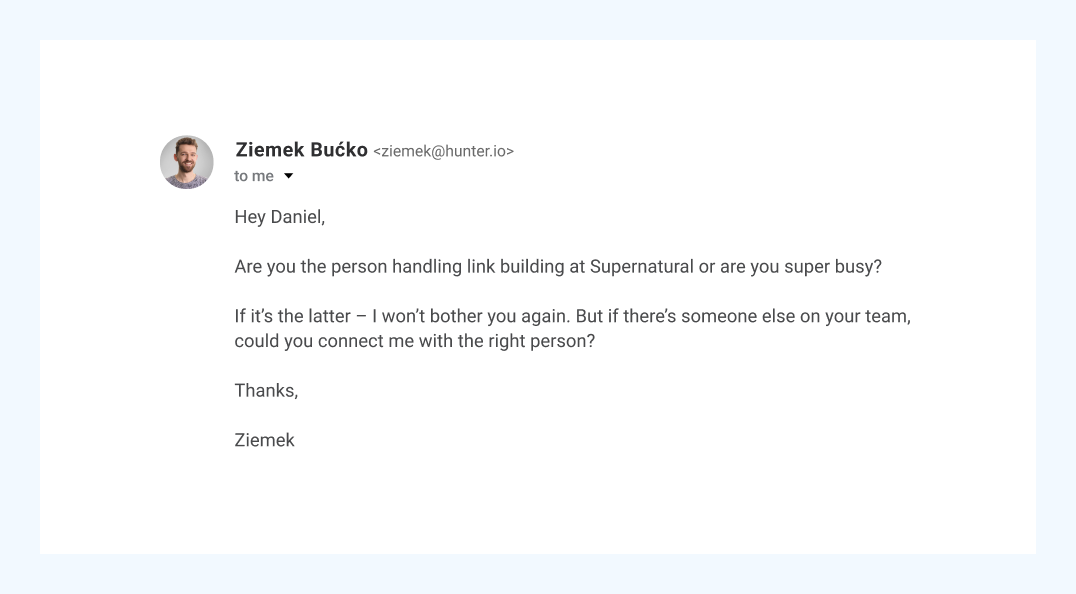
Liking/Unity
Cialdini quotes various pieces of research that prove liking someone makes us much more likely to comply with their requests. The same is true for people we consider a part of our group (who share our identity.)
Some liking and unity-related factors aren’t relevant for cold emails (like physical attractiveness). Still, others can be easily emulated:
- You can make your recipient like you by proving similarity: showing that you share common traits.
- You can pay your recipient a compliment.
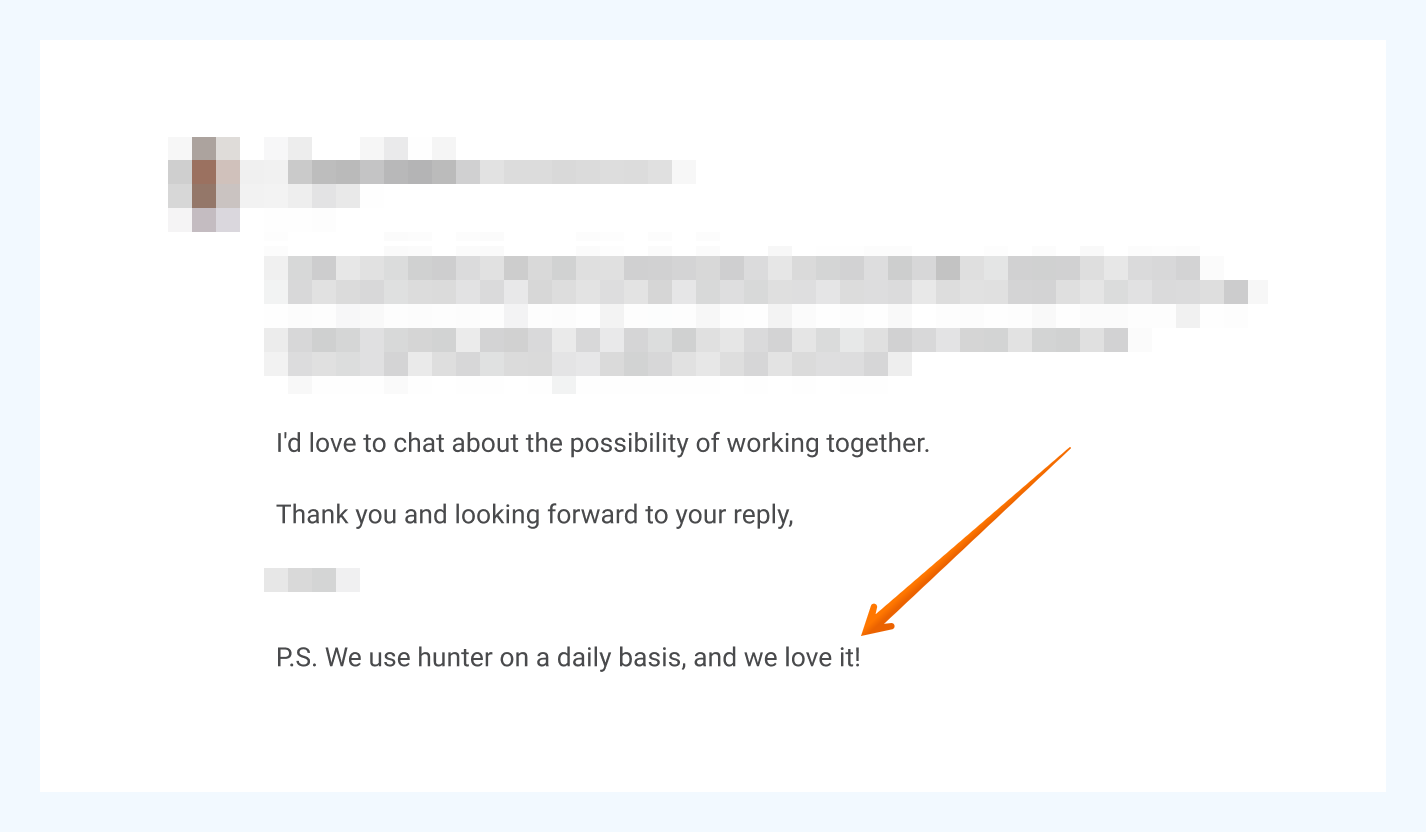
Reducing uncertainty
People want to feel prudent and validated before making important decisions. Cialdini lists two principles you can leverage to remove uncertainty for your recipients:
Social proof
The principle of social proof states that people’s decisions are heavily influenced by what others around them are doing.
This phenomenon can be easily leveraged in cold emails, e.g., by citing relevant case studies from your prospect’s industry.
Authority
Cialdini also says people tend to obey recognized authorities, and their decisions are influenced by what they think authoritative figures advise.
There are two ways to use this in a cold email:
- You can present yourself as an authority figure by demonstrating deep knowledge about the recipient’s problem.
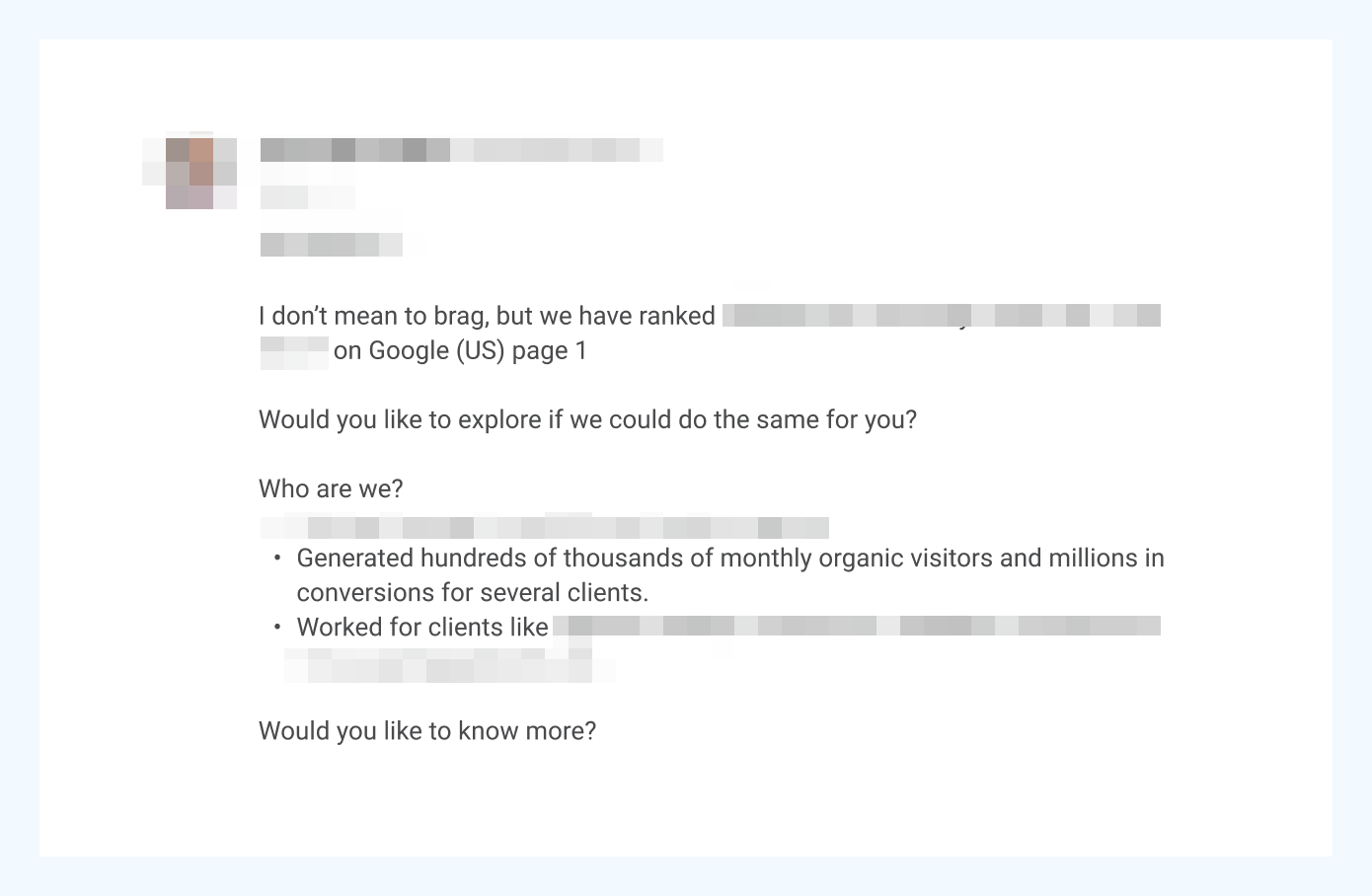
- You can quote other authoritative figures to support your message.
Motivating action
Finally, you may want to add a motivating element to your message. According to Cialdini, there are two mechanisms you can use to encourage action:
Scarcity
To quote Cialdini’s book, “people assign more value to opportunities that are less available.”
Two tactics are associated with this principle:
- You can set a deadline for your recipient, showing how the value you provide is time-constrained.
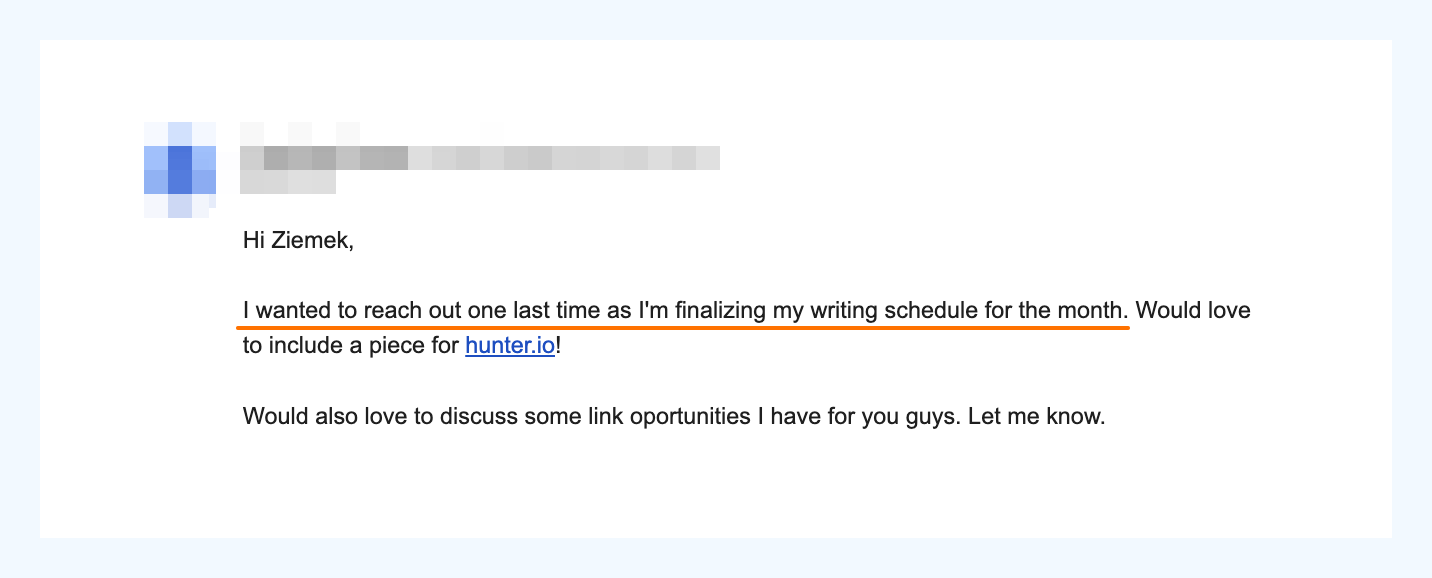
- You can suggest that the availability of what you’re offering is limited to a specific number.
Commitment and consistency
People want to look consistent in their actions.
Within email outreach, I see two applications for this principle:
- In most cold email scenarios, it’s crucial to make the initial request as small as possible. Gradually getting your recipient to where you want them to be is easier than making a big request upfront.
- You can also ask recipients to act consistently with their job title.
